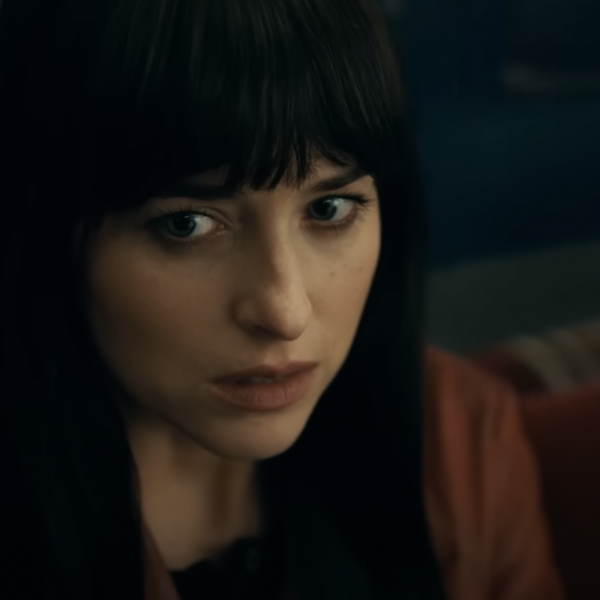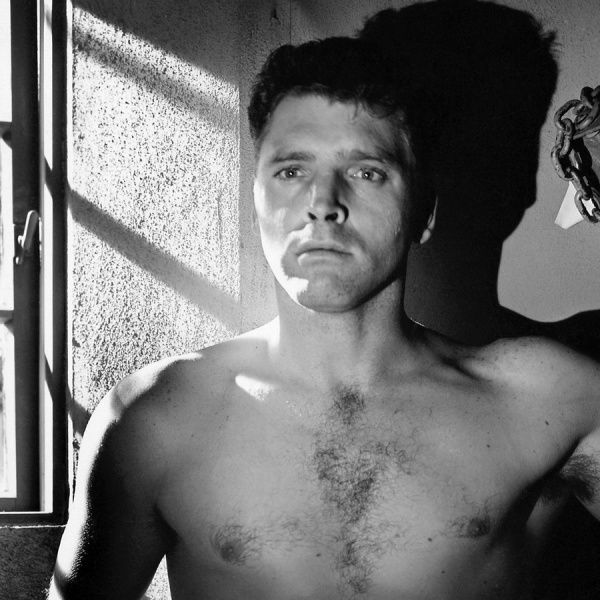The Director Also Talks About What Would Have Been His Version Of ‘The Hobbit’ & More In Massive New Yorker Tome

If you haven’t heard by now there’s a massive dissertation-sized profile piece on filmmaker Guillermo Del Toro in the latest issue of the New Yorker. A fascinating read, the story, penned by Daniel Zalewski, touches on all facets of the 46-year-old filmmaker’s life, from his obsession with monsters and macabre expertise in human and animal anatomy that started as a child growing up in Mexico; to his struggles with weight, his painful experiences on leaving “The Hobbit” and his Sisyphean task of bringing “At The Mountains Of Madness” to the big screen. The profile is about 20 pages long printed out and it’s a full meal to digest to say the least. Touching upon “Frankenstein,” to “Saturn and the End of Days,” the article doesn’t even mention half the myriad projects Del Toro is working on, but one does get the sense from that filmmaker almost has too many irons in the fire and wants to make six movies at once. You’re likely too busy surfing the web on your lunch break to read it all, but this is why you’ve got us to parse the most interesting need-to-know greatest hits of the profile.
Del Toro says that if he cannot make ‘Mountains’ the way he wants to make it, he will bail on the project and go elsewhere. He’s also been developing ‘Mountains’ since the early 90s.
The filmmaker said he will need to fight Universal for an R rating to ensure he has “the freedom to make it really, really uncomfortable and nasty.” His ideas for the film are incredibly ambitious and potentially incredibly expensive and the studio’s budget limit is currently at $125 million. “I don’t want to make a movie called ‘At the Mountains of Madness.’ I want to make this movie. And if I cannot make this movie I’ll do something else,” the director paused before adding. “It’ll be horrible.”
While Universal was impressed with his ‘Madness’ presentation in December and is expected to shoot this summer, as of January, it still has no green light.
“At each step [of his pitch], he wowed us, and, to be candid, he knew— and we all knew—that a ‘wow’ was required to keep this movie moving forward. It’s a big bet,” Adam Fogelson one of the top executives at Universal said. As of late January, the project remained what the author called, “potential energy,” but noted that Universal wasn’t quite ready to give the project a green light. While Del Toro was confident his creatures would eventually hit the screen, he also called Hollywood “the Land of the Slow No.”
His first foray into the studio system with “Mimic” was difficult
Miramax, which financed and distributed the 1997 underground-dwelling monster picture found Del Toro be “tediously arty” according to Zalewski, and they commissioned a second unit director to shoot what del Toro complained to be “cheap scares.”
He’s not afraid to lose personal fortune to ensure his monsters look more authentic.
According to Zalewski, the director returned his entire salary of “Pan’s Labyrinth” and half his pay for “Hellboy” because “he insisted on creature effects his backers considered too expensive.”
Del Toro’s version of “The Hobbit” would have been different from Peter Jackson’s take on “Lord Of The Rings.”
The director said he would have inevitably imposed his own sensibilities on that source material. “It’s like marrying a widow. You try to be respectful of the memory of the dead husband, but come Saturday night… bam.” Compared to Peter Jackson, he said his style would have been more “operatic”; for example, whereas Jackson’s visuals employed the gorgeous and very-real New Zealand skies, del Toro planned to use digital “sky replacement,” in his compositions for a more “painterly effect.”
As hinted in past interviews, Del Toro says his ideas may have eventually caused friction in “The Hobbit” camp and tensions, while hard to gauge, were palpable.
Here’s an excerpt:
“The visual aspect was under my control,” Del Toro said. “There was no interference with that creation.” In collaboration with Jackson and two screenwriters, del Toro had completed drafts for Parts 1 and 2. But final revisions were still to come, and he noted that any “strong disagreements” between him and Jackson would have occurred when they debated which scenes to film and which to cut—“You know, ‘I want to keep this.’ ‘I want to keep that.’ ” But, he said, he had quit “before that impasse.”
The production delays on “The Hobbit” also caused a strain on everyone and Del Toro said, he “could not distinguish between a real tension and an artificial tension.”
Del Toro’s design for Smaug the dragon also caused some discomfort.
“I know this was not something that was popular,” he said of his aesthetic for Smaug and according to Zalewski some of the look and feel would be “audacious innovations.” “Eight hundred years of designing dragons, going back to China, and no one has done it!” Del Toro said of his unique designs, but said he could not discuss at length because he did not own the intellectual property. “I have never operated with that much secrecy,” he said of his time at Weta.
The director doesn’t think much of his visual creations or treatments, will be used in “The Hobbit.”
Del Toro said leaving the ‘Hobbit’ production hurt “like a motherfucker,” adding “not much [of what I envisioned] is going to make it. That’s my feeling.” The most difficult part? “Making peace with the fact that somebody else is going to have control of your creatures, your wardrobe, and change it, or discard it, or use it. All options are equally painful.”
His version of “The Hobbit” would have been color coded eight ways.
“The stuff I left behind is absolutely gorgeous. I’m absolutely in love with it.” he said. “I had color-coded the movie: there was a green passage, a blue passage, a crimson passage, a golden passage. In Tolkien, there is a clear season for autumn, winter, summer, spring in the journey. And I thought, I cannot just stay in four movements in two movies. It will become monotonous. So I thought of organizing the movie so you have the feeling of going into eight seasons. So a certain area of the movie was coded black and green, a certain area was crimson and gold, and when we laid out the movie in a big room, we had all the wardrobe, all the props, all the color-coded key art. When you looked and saw that beautiful rainbow, you could comprehend that there was a beautiful passage.”
Del Toro’s office home is like a deeply eccentric haunted house/wax museum of the arcane, strange and grotesque.
It’s called “Bleak House,” it’s filled with all types of ghoulish maquettes from his films and other sundry tchotckes of the bizarre, his daughters find it too scary, it has a requisite bookcase that leads into a hidden room and it’s a location the outdoor-averse filmmaker doesn’t like to leave. He calls it his “man cave” and says having monster and occult ephemera all around him “feeds back” into what he does. Tim Burton is likely jealous of what sounds like the cliche home where he would dwell.
It also sounds a bit nerdy.
“The size of the collection was disconcerting; it was as if the 40-Year-Old Virgin had been handed a three-million-dollar decorating budget,” writes the New Yorker author.
Del Toro’s obsession with monsters and their anatomy is deep, obsessive and extremely knowledgeable and researched. Monster fans would be impressed at the depth of thought that goes into his creature creations.
Ok, no quotes, but you’ll just have to to read this thing and it will be acutely apparent to you then. Suffice to say it’s impressive.
In case you don’t remember what “Saturn and the End of Days” is.
Del Toro calls it a “deranged little movie” about a boy who witnesses the Rapture from his bedroom window. The picture was called a personal film and one that he had hoped to do following “The Hobbit,” but it sounds like it’s on the back burner for now considering ‘Madness’ and “Frankenstein” sound like they’re bigger priorities in the queue.
The personality always manifests in interesting ways, and one could argue Del Toro’s monster compulsion was a kind of rebellion for a boy who had daddy issues.
His father was a businessman named Frederico whom the director described as, “the most unimaginative person on earth,” and was constantly confounded by his son’s fascinations. Zalewski says confounding his father became a “lifelong project.”
Speaking of, his father was kidnapped in 1998 for seventy-two days. This is why he no longer lives in Mexico.
The excerpt reads: After the family paid two ransoms, Federico was released, and Guillermo moved his family to America. Although the experience was wrenching, he observed, “I highly recommend you save your father’s life. You don’t see yourself as somebody’s child anymore. You become a man saving another man.” He claimed that the experience had ended his “perpetual puberty.”
Don’t ever expect the director to make “Driving Miss Daisy” or some sort of regular drama free of genre guides and constraints.
“I don’t see myself ever doing a ‘normal’ movie,” del Toro said. “I love the creation of these things—I love the sculpting, I love the coloring. Half the joy is fabricating the world, the creatures.”
Seriously? That’s just the tip of the iceberg. There’s a lot more about “At The Mountains Of Madness,” and we encourage you, especially Del Toro fanatics, to read the entire piece.


